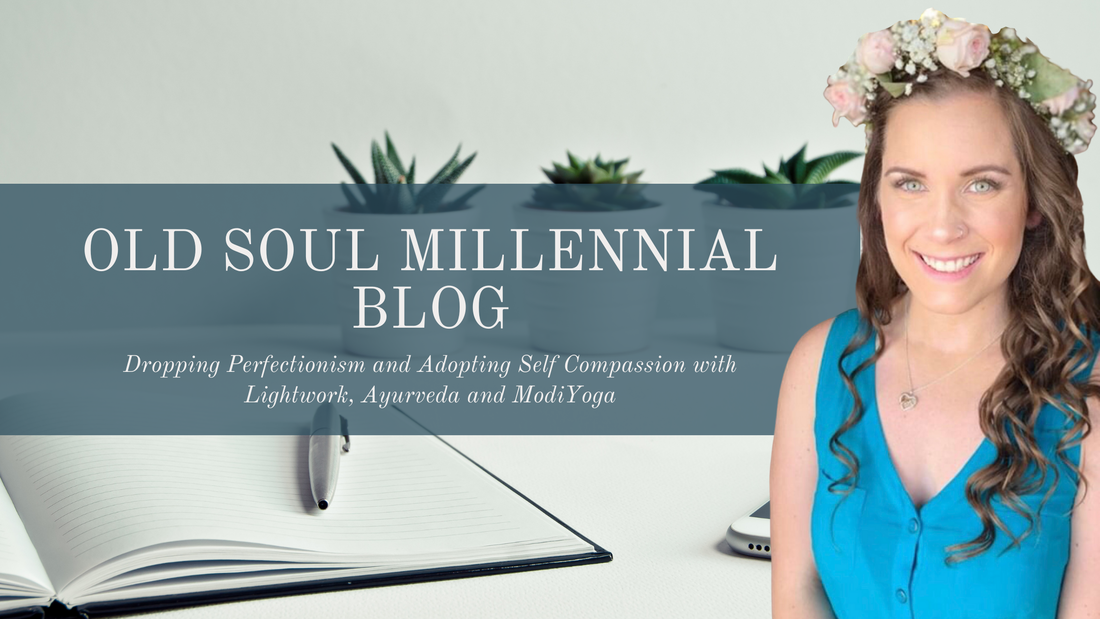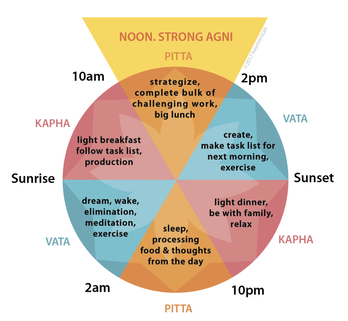|
Blog Autor: Emilia Wheaton Blog Editor: Kristen Kennedy Smith Less than a year ago, I resettled back to life in the United States after a three year hiatus in South America then Southeast Asia. I had accepted a volunteer opportunity with the Peace Corps--the chance to live and work in a rural Peruvian Andean community. When I left the US the summer after graduating from college, I anticipated a massive, earth shattering adjustment as I learned how to live without my American comforts: brunch on the weekends with friends, hot yoga with my favorite instructor, treating myself to a bath bomb and a glass of champagne (or really just even a hot shower), mornings spent perusing the shelves of the local bookstore, a cone of Ben and Jerry’s on a humid Vermont summer day. With all the excitement for my new adventure and lifestyle, I dreaded giving up the habits and items that made me feel comfortable and even greatly influenced my happiness (as I’d thought…)
Fast forward four years, and I now long for my days in Peru as a volunteer. Life was simple. Early mornings held plenty of time for a wake-up yoga flow and a hot cup of coffee (beans I’d roasted and ground myself). I changed from my pajamas into one of three or four outfits I rotated between and slipped on the same pair of sandals I wore every day. My possessions were minimal; I traded books with other volunteers in place of purchasing new copies, I went through about two bottles of shampoo and conditioner in two years (and zero bath bombs) only bathing once per week with lukewarm water I poured over my head from a plastic cup. Before the sun had fully stretched its morning rays over the community, my host family and I gathered grass to feed the guinea pigs and rabbits, stoked the wood burning stove to life, and had a pot of oatmeal rolling to a boil. Gathering around the wooden table in the thatched roof, dirt floor kitchen was as close as I was getting to Sunday brunch with the gals. And it was perfect. It’s not to say I didn’t wish sometimes that the oatmeal I ate five times per week weren’t eggs benedict with a mimosa on the side, but I came to accept the simplicity of my life, of their lives, and truly became accustomed to this bucolic lifestyle. Everything was simple and slow, noises were natural and soft, we moved without haste through our days and took it all in as we went. I believe that the changes and challenges of our lives serve to teach us lessons, to allow us time to practice the new behaviors and traits we wish to see in ourselves. It has been the challenge of my current chapter to duplicate the sense of inner peace that came so easily in Peru back her in the US. As mellow and laid-back was the lifestyle in Peru, I am finding the American lifestyle oppositely and equally hectic and frantic. When I stepped off the plane in the US last year, I returned with different lenses over my eyes and a reduced tolerance to the stimulus of the environment. My first challenge was to accept reality and not to resent it, not to constantly wish I were back in the place I had left, but to acknowledge the differences of then and now. I am now focusing on incorporating the simplistic aspects of my Peruvian life that had allowed me to focus on my self-development, inner peace and present-mindedness. What are those simplistic aspects, exactly? And how do I modify them for my current lifestyle?
These techniques are imperative for me to stay not only sane but happy, productive and grateful for my life. Keeping it simple allows me to level up: to walk onward with a clear head, to push aside unwelcome stimuli and to focus on who and where I want to be. Keep it simple, folks.
1 Comment
Blog Author: Emilia Wheaton Blog Editor: Kristen Kennedy Smith Photo Credit: @heymonicab on Instagram Ayurvedic wisdom has a place in our diets, our physiology as well as in our daily routines! Based on Ayurvedic philosophy, the ebb and flow of the day corresponds to each unique Dosha. Depending on the hour, it is important to balance each Dosha’s influence on our body and minds. Wakeup: 6 am Greeting the day before the sun rises allows us to wake during Vata time, when the air is fresh and pure. Rising with Vata energy allows us to get a clean start to the day. If we wait to wake during Kapha’s phase (after sunrise) we will wake to a more sluggish, slow, heavy morning energy. Start pushing back your wakeup time gradually to form a habit of awakening during Vata’s bright, airy hour. Ayurvedic morning cleanse:
Light exercise: Indulging in some morning stretches is the perfect way for our bodies to awaken. Vata morning hours are a great time for improving flexibility, releasing any creakiness left over from the stagnation of sleep, and to charge our bodies for a full day of chores ahead. Try grounding, stretching poses to set yourself up with a firm footing just as the day is beginning. Breakfast: before 6am if possible The first meal of the day should be a light one; though each Dosha is best fed with distinct foods, an Ayurvedic breakfast is typically warm or lukewarm in order to stoke the weak morning flames of our digestive fire. Breakfast time is Kapha time, so be sure not to agitate Kapha dosha with anything heavy or sugary. Aim for fresh fruit and oatmeal seasoned with warming spices, something light and stimulating. Taking time to slowly orient ourselves during the mid-morning (Kapha time) is a good time for crossing small things off our lists, setting intentions for the day and preparing for the bulk of our productiving around the middle of the day, which is Pitta time. Pitta’s midday piece of the daily cycle is perfect for hard work, as Pitta is task-oriented, powerful and driven. Lunch: largest meal of the day (noon) Our agni, or digestive flame, rises and intensifies as the sun peaks in the sky. Midday is the perfect time for the largest meal of the day, as our strong Pitta tummies are ready for the bulk of our nutrients to carry us through the most productive, active part of our daily routine. Since our digestive fire is so strong at this hour, it’s the best time of the day to eat meat, fish, or poultry. This is also the best time of day to eat raw foods, though these can be difficult to digest. Pay special attention to introduce cooling or neutral foods that won’t agitate our already hot, powerful digestion. Dinner: before 7pm Eating at least three hours before bedtime allows enough time for our body to move through digestion, enough time for food to move completely through the stomach so as not to accumulate toxins. Calming nighttime routine, in bed by 11: Kapha vibes rolls around again after sunset, the perfect time to wind down and soothe ourselves to eventual sleep. Nighttime meditation can help ease our minds as well as our sympathetic nervous system. Practice deep, slow breathing accompanied by meditative intention setting for a restful, healing sleep. A warm bath with lavender essential oils is another method of soothing our senses. Indulge in a temple and head massage, using warm oil in the traditional Ayurvedic way prepares our body to wind down and slip into deep, blissful sleep. This routine matches the Doshas because we are pacifying Kapha by waking before 6am, pacifying Pitta by eating our largest meal when the sun is high at noon, and we are pacifying Vata by resting and restoring before bed. Author: Emilia Wheaton Editor: Kristen Kennedy Smith Maybe you’ve heard a yoga instructor say something like “raise your thumbs to meet your Ajna third eye center” or seen a Chakra balancing workshop advertized on Instagram and aren’t quite sure what everyone’s talking about when they mention the Chakras. Affirmations and Innovations is here to drop some basic Chakra knowledge.
First off, the word Chakra originates from a Sanskrit word meaning wheel. We can envision the Chakras as energy wheels that align along the spine. Each Chakra corresponds with a body position, a color, and emotional traits. Energy flows in and out of our Chakras, but energy can sometimes get stuck or be absent, leaving one or more Chakra depleted and weak. Fortunately, the more we know the better we can notice our body and mind’s signs to take care of our energy needs. ROOT: Muladhara Located at the base of our spine, the root chakra is associated with the basics, like security, money, home and survival. If there is a disruption in our lives causing us to lose security or groundedness we may physically perceive this root chakra imbalance as ankle or knee pain or we may experience fatigued or restless legs. Emotionally, an imbalanced root chakra feels like fear, overwhelm or worry. SACRUM: Svadhisthana The sacral chakra sits among our hips and governs sexuality, suppressed emotion, frustration and a sense of feeling all the feels. Pain or discomfort in our sexual organs, lower back pain or tight hips or IT bands can signal an imbalance in our sacral chakra. An emotional imbalance feels like otherwise unexplained frustration or anger. SOLAR PLEXUS: yellow; Manipura The solar plexus chakra is at our body’s center, right in the middle of our torso at our stomach and is associated with personal willpower, boundaries, confidence, excitement and anxiety. When energy flow to our solar plexus is disrupted, we can feel stomach aches, bloat and experience poor digestion. Emotionally, a disrupted solar plexus feels like anxiety, discomfort, doubt, or acting manipulative. HEART: green; Anahata Our heart chakra is associated with healing, love, care and compassion but when it is out of balance we may feel closed off, grief, sadness, depression, or fear of intimacy. Physically, an out of balance heart chakra can feel like a difficulty breathing, a tight chest, sore arms or wrists or general fatigue and illness. THROAT: blue; Vishuddha Located at our neck, the throat chakra rules our ability to speak our truth and use our voice, to express ourselves genuinely and clearly. If energy running through our throat chakra is blocked we can feel a sore throat, cough, or produce phlegm and clear our throat constantly. Emotionally, an unbalanced throat can feel like suppression, disempowerment, inauthenticity or even a compulsion to tell lies. THIRD EYE: indigo; Ajna Posed in the center of our forehead, in between our eyebrows is the third eye chakra. It is associated with the pineal gland which regulates our sleep/wake cycles. It is associated with wisdom, foresight, spirituality and insight, which makes sense given it’s positioning near the optic nerves. If our third eye chakra is unbalanced, we can feel headaches and tired eyes or cause us trouble sleeping. An emotional third eye balance generates confusion, mental fog, lack of direction or feelings of being stuck without visions for one’s future. CROWN: violet; Sahaswara The last chakra positioned at the very top of our head or slightly above our head, where a crown would sit, is associated with thoughts, knowledge, understanding and our sense of presence. Physical imbalances will feel like migraines or tension headaches, fatigue, or sore temples. Emotional symptoms of an unbalanced crown can feel like overthinking, anxiety, close mindedness or urgency. Knowing how to identify the ebb and flow of energy throughout our chakras can help us identify which chakras are open and balanced versus which are closed and blocked. These imbalances can be alleviated by practicing yoga, modifying our diet or receiving reiki. Give Episode 21 of The Old Soul Millennial Podcast a listen if you’d like to learn more about the chakras and ways to settle chakra imbalances. Want even more Chakra knowledge drop?! Kristen offers an incredible webinar to help us uncover the truths behind the body’s 7 Chakras. |
AuthorAbout the Editor: Archives
January 2021
Categories |





 RSS Feed
RSS Feed
